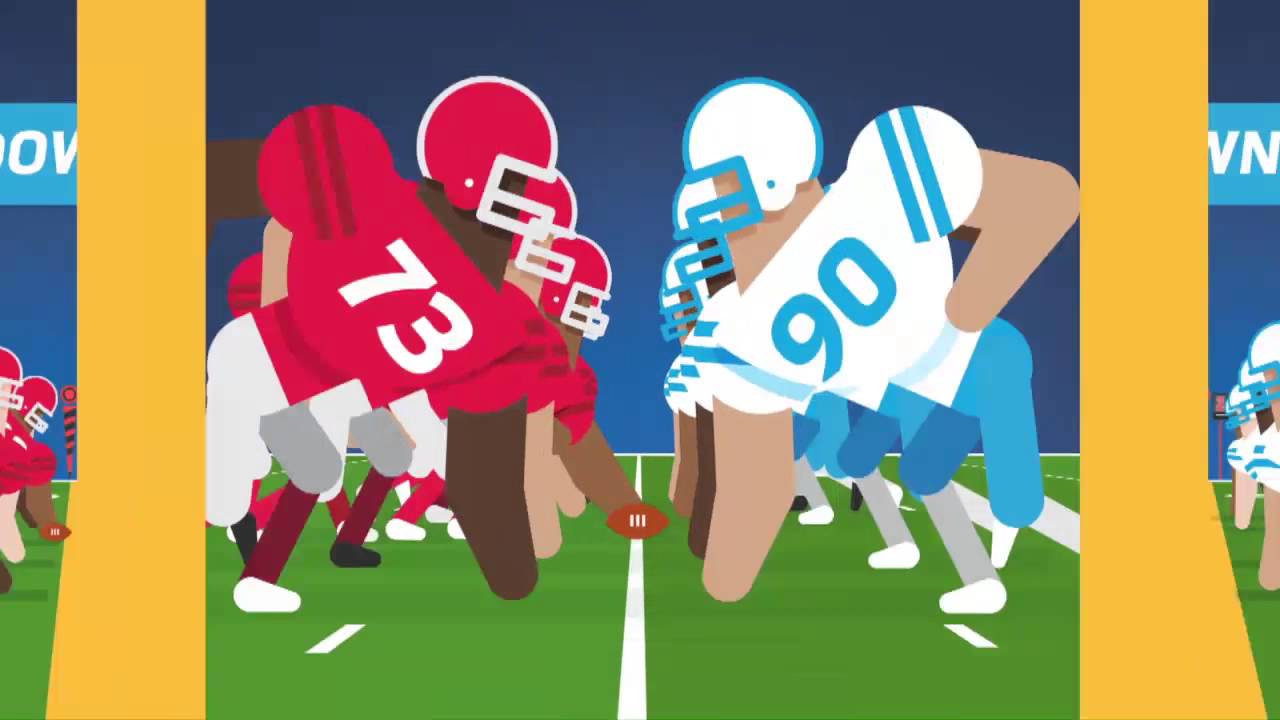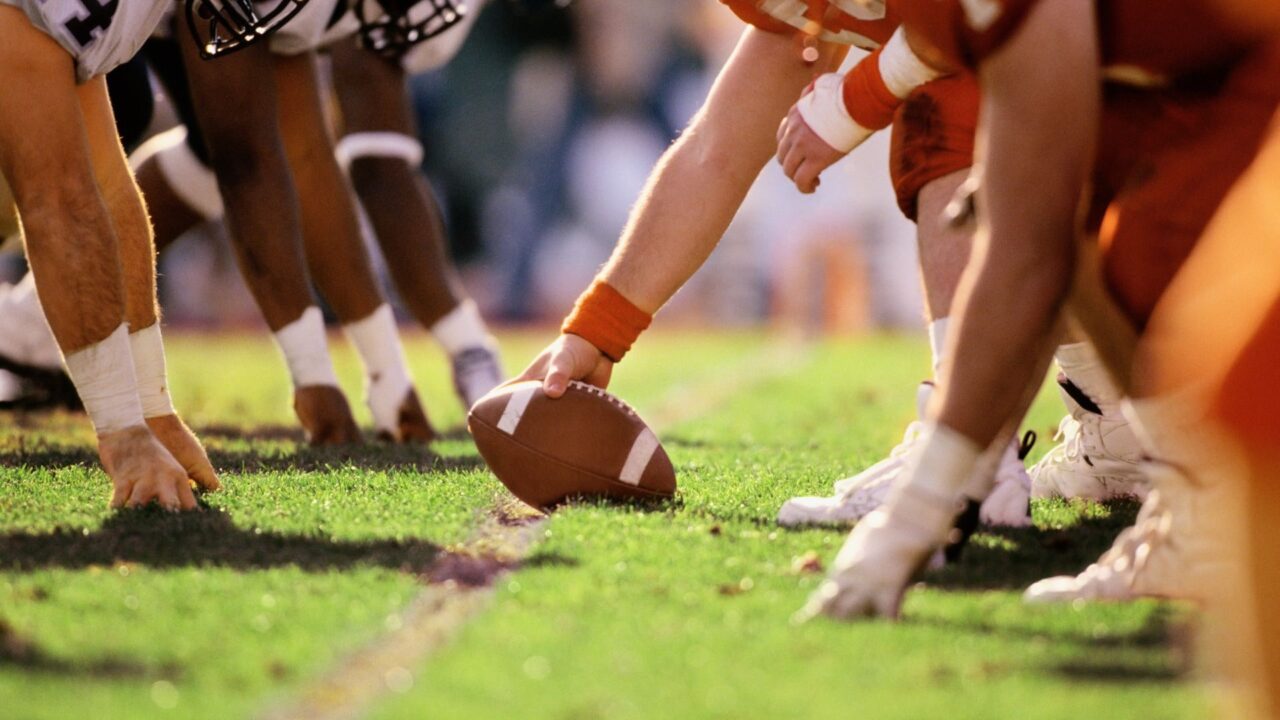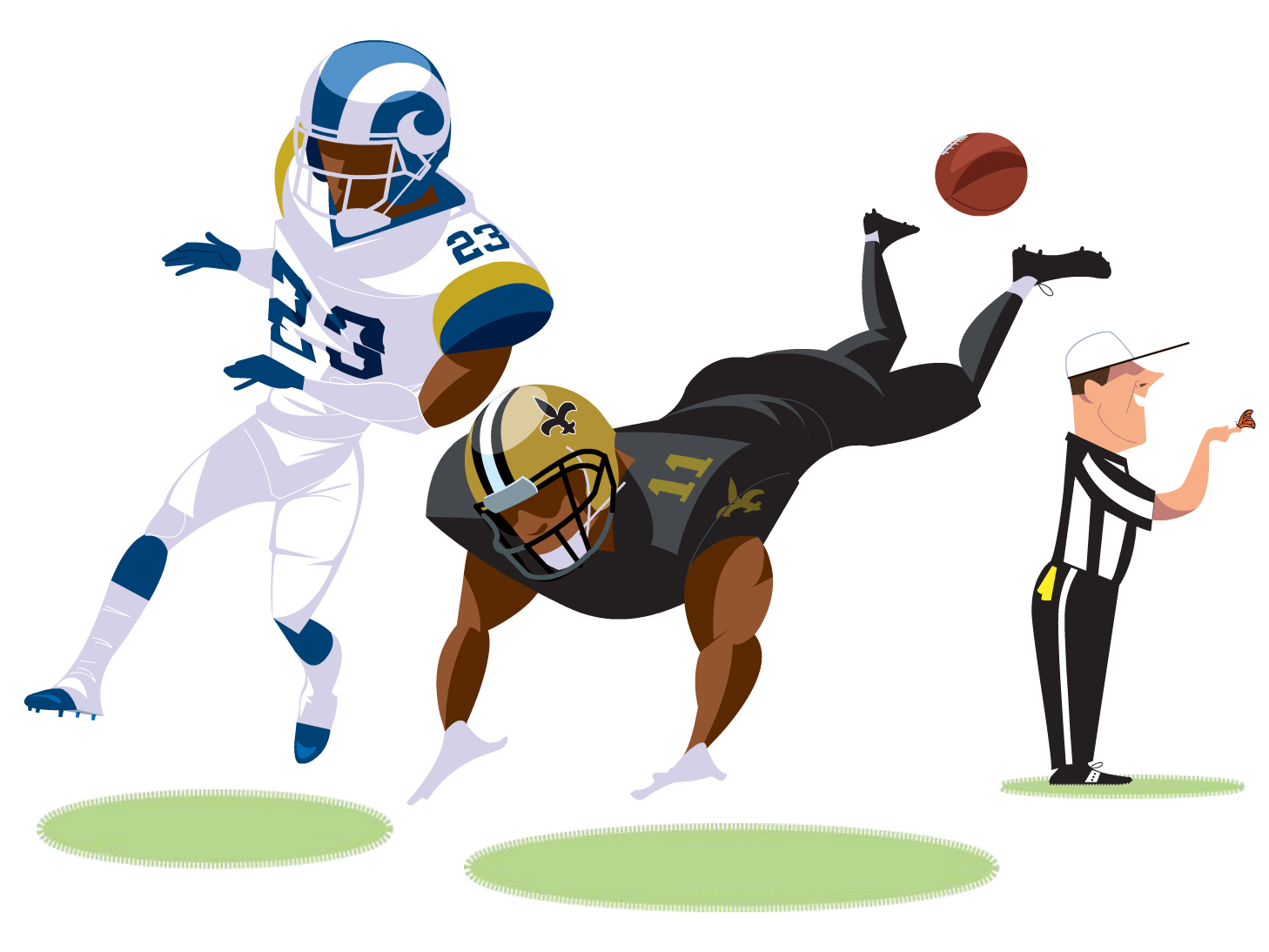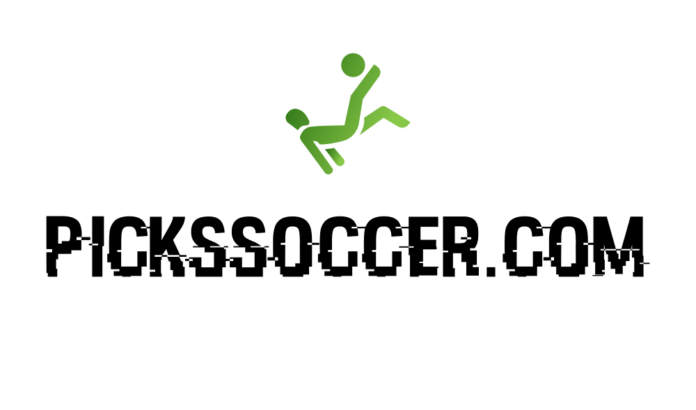Super Bowl Rules & Terms for Beginners: How Football & the NFL Works
When the Kansas City Chiefs and the Tampa Bay Buccaneers play the NFL final, the National Football League, in the Super Bowl on February 7, the most important Super Bowl rules and terms will again be in focus.
Because meanwhile, the Super Bowl has also become a social highlight in Germany – despite the time difference (the Super Bowl rises from Sunday to Monday).
But: Hardly any other sport is initially as complicated, confusing and difficult to understand as American football.
So that you are well prepared for the Super Bowl 2021, we explain the most important football rules here. Then you will know everything you need to know about the NFL final.

What is the Super Bowl?
The Super Bowl is the final of the National Football League (NFL).
The league is divided into two conferences (AFC and NFC), each of which plays out its conference winner in a playoff format. The two victorious teams then meet for the Super Bowl, which traditionally takes place on the first weekend in February.
This year the Super Bowl will take place in Tampa, Florida. It is the 55th edition of the final game and the Tampa Bay Buccaneers (winner of the NFC) and the Kansas City Chiefs (winner of the AFC) face each other.
In addition to its sporting value, the Super Bowl is also famous for a lot of additional entertainment. For example, a Super Bowl 2020 commercial cost an average of around 5.2 million US dollars.
The halftime show (here: The best Super Bowl halftime shows) is always celebrated spectacularly and superstars like Michael Jackson, Justin Timberlake or U2 have already performed there.
This is how an American football game works
American football is about getting the ball into the opponent’s end zone and scoring (touchdown). To do this, they have to gain space, i.e. yards. Eleven players per team are on the field.
The offense attacks and tries to get into the end zone with the ball, whether by running or passing. The defense, the defense of the opposing team, tries to prevent this.
The attacking game always starts on the line of scrimmage. This imaginary line shows the point on the field to which the attacking team came with the last move (“Down”).
The offense has four downs to gain at least ten yards of space.
If you create a new first down, it will start all over again. Until the team either loses the ball, does not gain 10 yards, scores a field goal or a touchdown.
If the 10 yards cannot be reached in the course of a drive, the opposing team receives the ball and may attack. But the defense goes from the field and the offense comes. With the other team, it is exactly the opposite – OFfense goes, defense comes.
Playing time: A game lasts four quarters of 15 minutes each.
Playing field: The “gridiron” is 100 yards (approx. 91 meters) long and has a width of 53 yards (approx. 49 meters). At both ends of the field, there is the so-called end zone, in which the tuning fork-shaped goal is located.

The most important Super Bowl rules & terms easily explained
American football is a sport that is different from many other team sports. On the one hand, there are different teams (units) within a team and on the other hand, there are more game interruptions than in any other sport.
This is mainly due to the structure of the game, which is initially about generating new first attempts (first downs). Each team always has exactly four attempts to gain 10 yards of space.
That’s why there are a lot of Super Bowl terms and rules. These are not always easy to understand for beginners. Here we give an overview of the most important terms in American football.
These are the most important Super Bowl terms
Blind Side: The blind side is the side of the offence to which the quarterback turns his back after the snap and where he is significantly more unprotected.
Complete Pass: A pass that is caught out of the air and held securely.
2-point conversion: The possibility of scoring two extra points with one move after a touchdown. The end zone must be reached again from two yards away.
First, Second, Third, Fourth Down: This shows how many attempts are currently being played in order to achieve the prescribed 10 yards.
Drive: A drive is the sum of all moves. In other words, a complete series of attacks until the opponent is in possession of the ball again.
End zone: The area on both sides of the pitch between the Goal Line (the line between the pitch and the end zone) and the End Line (the line at the height of the goal post). The football must be carried or caught there to score a touchdown.
Extra point: After a touchdown, the attacking team has the opportunity to score an extra point by kicking through the goalposts from a distance of 35 yards.
Field Goal: Successful kick through the goalposts for which you get three points.
Flag: Thrown onto the field by the referees when a foul has occurred.
Fumble: A Super Bowl term that appears repeatedly in an NFL game is a fumble. This is how the ball is dropped after the ball carrier has already had control of the ball. This often results in a turnover, i.e. the loss of the right to attack.
Huddle: a gathering of players before they position themselves on the line of scrimmage. In the huddle, the quarterback sets the next move.
Incomplete Pass: A quarterback pass that hits the ground before being caught and controlled by the receiver. Unlike interception, this does not result in loss of the ball.
Interception: Interception of the football from the air, giving the defending team the right to attack.
Kickoff: Kick-off in which the kicker shoots the ball forward from the tee (small plastic stand).
Kick Return: Attempt by the defense to carry the trapped ball forward after a kickoff.
Pick Six: Defense touchdown resulting from an interception.
Play Action: A passing game that is fooled with a running game.
Pocket: Is the “pocket” formed by the offense line players to shield the quarterback from attacks by the defenders when attempting a pass.
Punt: tee shot out of hand. Practised by the attacking team once they have not reached the yards required for a first down – usually after the 3rd down. After a punt, possession usually changes.
Red Zone: The area of the field between the 20-yard line and the end zone. The red zone has no official, but the only statistical significance and is usually not marked on the field.
Sack: Defense attack on the quarterback that knocks him down before he can pass the ball.
Safety: An attacking player in possession of the ball is brought down in his own end zone or commits a foul in his own end zone. This gives the defending team two points.
Spike: The quarterback purposely throws the ball on the ground after the snap to stop the clock.
Tackle: Action of the defence in which the player of the opposing team in possession of the ball is held or brought to the ground. A tackle is only permitted opposite the ball carrier.
Time Out: The Super Bowl also includes time out, i.e. time out. Each team is allowed three-time outs per half.
Touchdown: This is arguably the most important of the Super Bowl terms and rules. The touchdown is the goal of an attack, which is achieved when the ball is either carried into the end zone or is caught by a receiver in the end zone. You get six points for a touchdown.
Two Minute Warning: Two minutes before the end of each half, the game is interrupted with an additional time-out that does not have to be taken by the teams
Super Bowl Rules & Terms on Fouls: This will be punished
In addition, there are numerous penalties in the Super Bowl rules that can be pronounced, which can always be recognized by the referee throwing yellow flags on the field.
The most common team mistakes that lead to such a penalty are false start of the offense, false start of the defense, too many players on the field (12 men on the field) or neutral zone infraction if a player of the defense enters the field too early neutral zone.
Personal punishments by players are also common, the most common of which are holding (holding), tripping (tripping), face mask (reaching into the opponent’s grille) and pass interference (preventing the opponent from catching a ball)
Super Bowl terms rules
Penalties are usually punished with 5-15 yards lost for the fouling team.
However, there are also cases, e.g. Pass interference, in which the ball is then placed on the spot of the foul.
False start: Often occurs during the offense. Only when the center has “snapped” the ball to the quarterback are the players allowed to move forward.
Holding: It is not permitted to hold or pull an opponent by the body, jersey or shoulder pads.
Tackling with the helmet (Helmet to Helmet): Whoever thunders purposefully with his helmet against the helmet of the opponent, will be thundered into a lot of space loss and possibly subsequently fined heavily by the NFL. Because the risk of injury is very high.
Grip into the helmet grille (facemask): Even in the new football season, it is forbidden to grab the grille of your helmet or even to pull it.
Unauthorized block (chop block): An attack from the front on the abdomen of the opponent is taboo.
Super Bowl rules and terms for the items
An NFL American football team consists of three different departments:
The attacking team (offense), the defending team (defense) and the special team (responsible for kickoff, field goal etc.).
Depending on the game situation, there is always only one department in the field.
As part of the Super Bowl terms, we explain who does what on the field and what tasks the respective positions have in the game.
That’s what the offense does
Offensive Line: The offensive line of a team consists of the center, as well as two guards and offensive tackles. These are mainly there to hold up the opposing defenders, to give the quarterback time or to block gaps for the ball carrier during the running game.
Quarterback: The playmaker of the attack who can either throw the ball to his wide receivers (WR) or pass it to his running back (RB) on each move. Like the running back, the quarterback can run himself.
Running back: The ball carrier who, after the ball has been handed over by the quarterback, paves the way through the defense in order to gain as much space as possible. Running backs can also be used in the passing game and are also allowed to catch quarterback balls.
Full Back: Are used both as somewhat stronger running backs and for blocking for the actual running back.
Wide Receiver: Usually the fastest and most agile players on the field. You have to catch the quarterback’s passes in order to run as far as possible towards the end zone.
Tight End: A so-called hybrid position with a wide variety of tasks. Can catch balls like a wide receiver as well as block large defenders on the line of scrimmage (LOS).
Defense does that
Defensive line: The defensive line consists of two defensive tackles and two defensive ends, which are intended to put the opposing quarterback under pressure or bring it down in the passing game and to stop the opposing ball carrier during the running game.
Linebacker: The second line of defence behind the defensive line, which both stops the ball carrier during the running game and also becomes active in the pass defence. In some cases, linebackers take on the same function as the D-line and put pressure (lightning) on the quarterback.
Cornerback: The outer man-defenders who play against the wide receivers in the passing game.
Safeties: The inside / deep pass defenders are the last line of defence.

Special Super Bowl rules
In the Super Bowl rules, the official home law is very simply laid down. The winner of the AFC has home rights in the even years, the winner of the NFC in the odd years.
This means that the Tampa Bay Buccaneers (NFC) officially have home rights this year and can choose their jerseys. The fact that they play in their own stadium does not affect home rights.
This fact is actually a novelty, as the Buccaneers are the first NFL team to ever reach the Super Bowl in their own stadium.
Another special feature for playoff games and thus also for the Super Bowl is that games (of course) cannot end in a draw.
If there is a tie at the end of the regular playing time, ten minutes of extra time are played, in which the team that gets the ball first can win the game with a touchdown.
If no touchdown is achieved on the first drive, the next score decides, regardless of which team or in which way it is achieved (touchdown, field goal, safety).
In all these years, however, only one Super Bowl went into overtime. In 2016, the New England Patriots defeated the Atlanta Falcons with a touchdown with 34:28.



